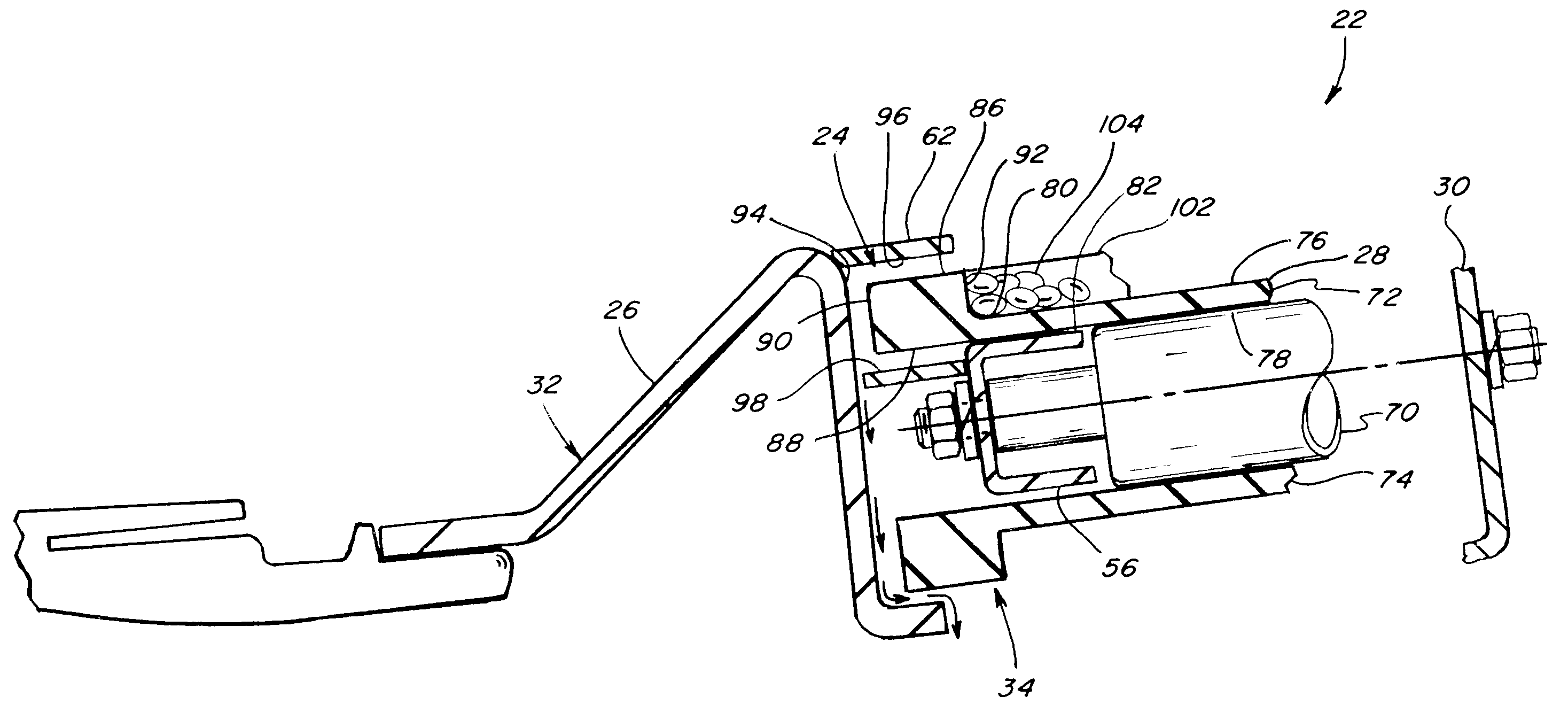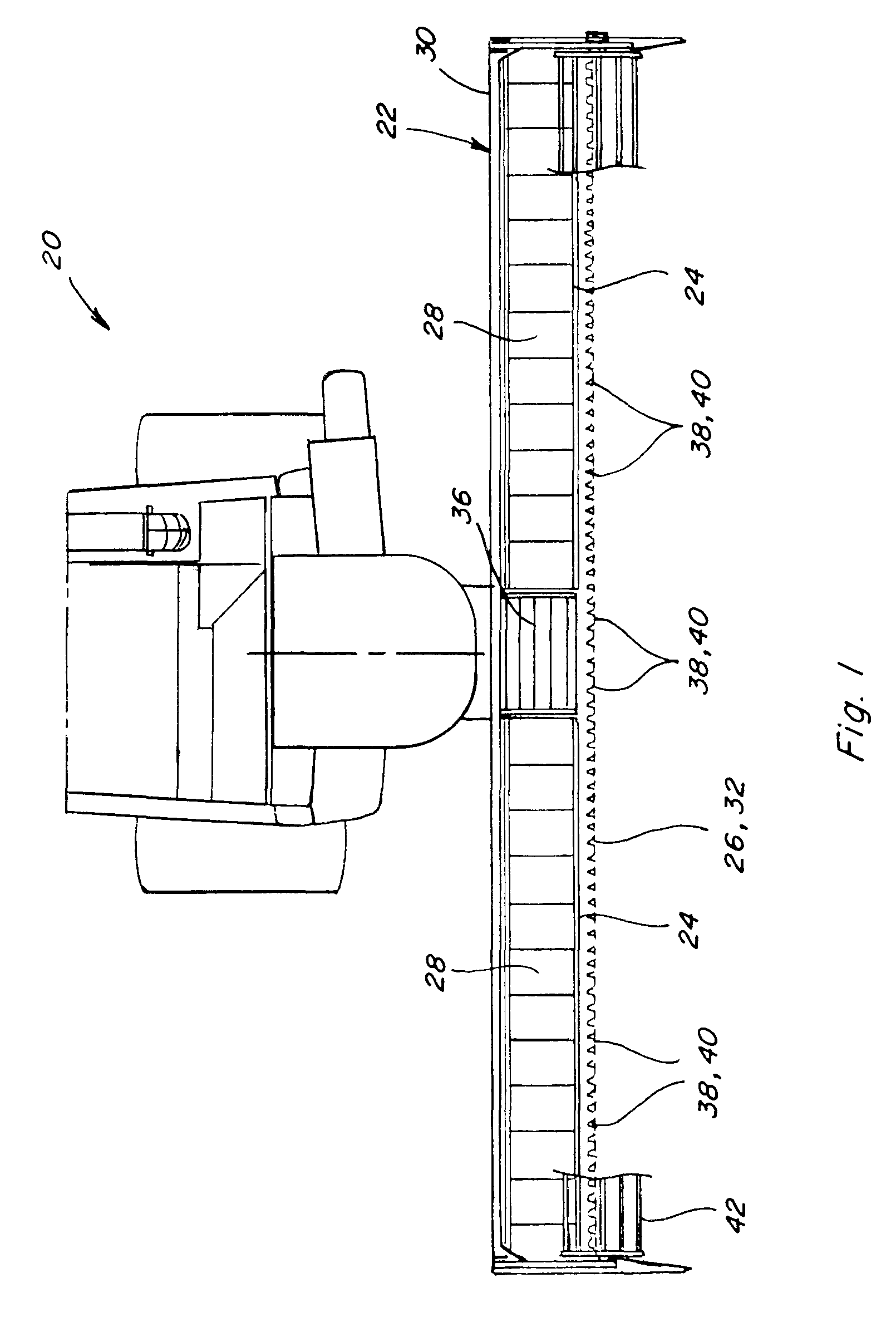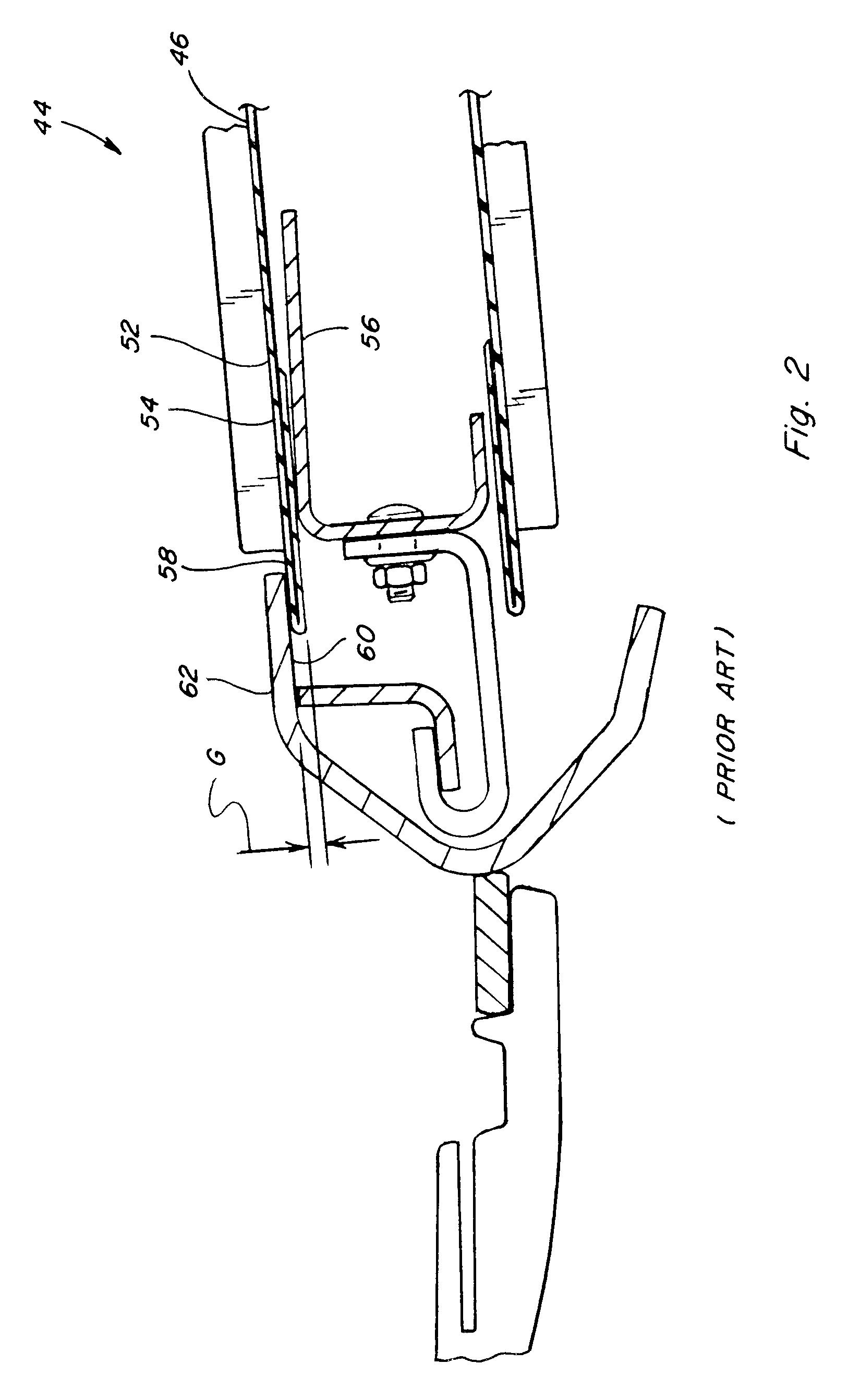Draper header with multiple sided cut crop barrier interface between the cutter bar and draper canvas
- Summary
- Abstract
- Description
- Claims
- Application Information
AI Technical Summary
Benefits of technology
Problems solved by technology
Method used
Image
Examples
Embodiment Construction
[0024]Referring now to the drawings, a preferred embodiment of the invention will be described, as will several prior art devices. In FIG. 1, a representative harvester 20, which is a combine harvester of well-known construction, is shown, including a draper header 22 incorporating a multiple sided cut crop barrier interface 24 between an elongate sidewardly extending cutter bar 26 and a front edge of an elongate sidewardly extending draper canvas 28 of header 22, which effectively prevents entry of cut crop and material carried thereby into the interior of the header, while reducing friction between the draper canvas and cutter bar, so as to provide better wearability and extended draper fabric life.
[0025]Header 22 comprises a frame 30, one element of which is shown extending forwardly from a rear support frame structure (not shown) to cutter bar 26. Frame 30 of header 22 can have a variety of forms, but will generally comprise a structure of sheet metal members configured for supp...
PUM
 Login to View More
Login to View More Abstract
Description
Claims
Application Information
 Login to View More
Login to View More - R&D
- Intellectual Property
- Life Sciences
- Materials
- Tech Scout
- Unparalleled Data Quality
- Higher Quality Content
- 60% Fewer Hallucinations
Browse by: Latest US Patents, China's latest patents, Technical Efficacy Thesaurus, Application Domain, Technology Topic, Popular Technical Reports.
© 2025 PatSnap. All rights reserved.Legal|Privacy policy|Modern Slavery Act Transparency Statement|Sitemap|About US| Contact US: help@patsnap.com



